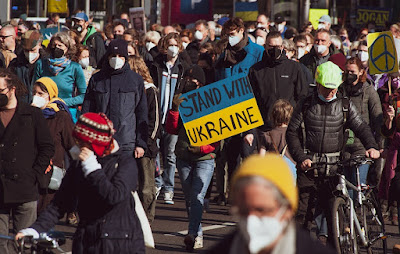The
conflict between Ukraine and Russia has been ongoing since 2014 when the
Russian Federation annexed Crimea from Ukraine, following a controversial
referendum. The annexation was widely criticized by the international
community, which led to the imposition of economic sanctions on Russia by
several countries. Since then, the conflict has escalated into a full-scale war
between Ukrainian government forces and pro-Russian separatists in eastern
Ukraine, resulting in thousands of deaths and displacements.
The root of the
conflict lies in Ukraine's decision to pursue closer ties with the European
Union and NATO, which Russia saw as a threat to its sphere of influence in the
region. The annexation of Crimea was seen by many as an attempt by Russia to
reassert its dominance over Ukraine and prevent it from joining Western
alliances. In response, the Ukrainian government launched a military operation
to retake control of the separatist-controlled areas in Donetsk and Luhansk
regions, leading to a protracted conflict.
The war has been
marked by a series of ceasefires and peace talks, none of which have been
successful in bringing lasting peace. The Minsk agreements, signed in 2015,
aimed to bring an end to the fighting, but have not been fully implemented.
Both sides have accused each other of violating the ceasefire, with sporadic
clashes continuing to occur.
The conflict has had
devastating consequences for the people of Ukraine, particularly those in the
conflict-affected regions. The war has resulted in the displacement of over 1.7
million people, with many forced to flee their homes due to the fighting. The
humanitarian situation in the conflict-affected areas has been described as
dire, with access to basic services such as water, food, and healthcare
severely limited.
The
international community has condemned Russia's annexation of Crimea and has
imposed economic sanctions on Russia as a result. However, diplomatic efforts
to resolve the conflict have been largely unsuccessful, with both sides
refusing to compromise on key issues. The conflict has also raised concerns
about the future of European security and stability, with fears that it could
escalate into a wider conflict involving other countries.
In conclusion, the conflict between Ukraine and
Russia is a complex issue with no easy solutions. The ongoing war has had a
devastating impact on the people of Ukraine, and the international community
must continue to work towards a peaceful resolution to the conflict. While the
path to peace may be long and difficult, it is essential for the sake of the
people affected by the conflict and for the stability of the region as a whole.

Comments
Post a Comment